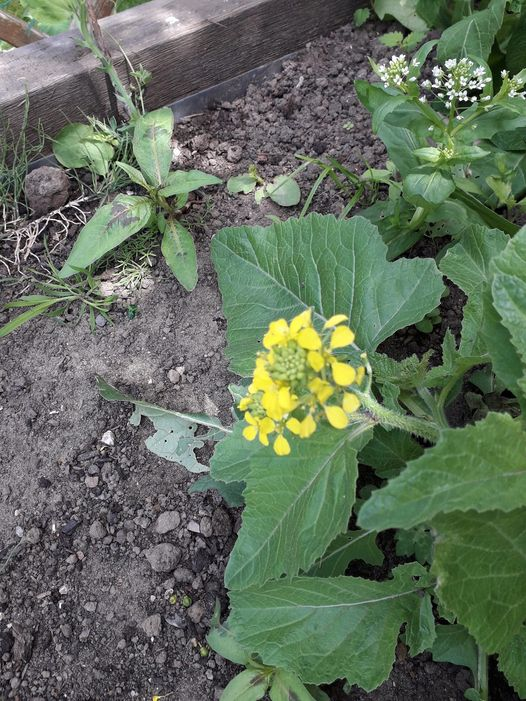This Forum will close on Wednesday 27 March, 2024. Please refer to the announcement on the Discussions page for further detail.
ID ?
in Plants
This plant has arisen near where I planted my garlics, last December. I had planted potatoes in this raised bed, last year, and thought I'd got everything out, but there seem to be more potatoes than last year, even moving into the garlic area. This looks like a potato plant, especially amongst the the other potatoe plants, with similar leaves, but these are 'cut' at the edges, so I don't believe they are spuds. Anybody got any idea what this plant is (with the small yellow flowers)? A

0
Posts
https://www.plantlife.org.uk/uk/discover-wild-plants-nature/plant-fungi-species/charlock
The one on the edge of the bed with the black blotches on the leaves is Redshank - Persicaria maculosa ... they're both common weeds of arable farmland.
Cant see enough of the plant with the white flowers to ID it properly but its a crucifer so possible a brassica? radish? that sort of thing?
Gardening in Central Norfolk on improved gritty moraine over chalk ... free-draining.
In the sticks near Peterborough
I mean, too much mustard for example isn't good for a person ... but it's not regarded as poisonous.
Gardening in Central Norfolk on improved gritty moraine over chalk ... free-draining.
https://en.wikipedia.org/wiki/Sinapis_arvensis
and is frequently picked in Cyprus as part of the traditional ‘Horta’ the dish of wild greens eaten in the spring. https://cyprus-mail.com/2022/03/30/spring-is-in-the-air-time-to-forage-for-greens/
Its a brassica … as are Brussels sprouts … too many of those can upset your tum but as I said, not toxic in the commonly accepted use of the word. 😊
Gardening in Central Norfolk on improved gritty moraine over chalk ... free-draining.